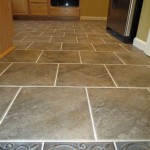Can You Lay Tile On Concrete Floor?
Laying tile directly onto a concrete floor is a common and often preferred method for various tile installations. Concrete provides a stable, level, and durable substrate ideal for supporting ceramic, porcelain, natural stone, and other tile types. However, successful tile installation on concrete requires careful preparation and adherence to best practices to ensure long-lasting and aesthetically pleasing results.
Several factors contribute to the suitability of a concrete floor for tile installation. The concrete must be structurally sound, free from significant cracks or damage, and adequately cured. New concrete typically requires a curing period of at least 28 days before tile can be installed. This curing period allows the concrete to reach its full strength and minimize the risk of shrinkage cracks that could later affect the tile installation.
Moisture is a critical consideration when tiling over concrete. Excessive moisture can weaken the bond between the tile and the adhesive, leading to eventual tile failure. A moisture test should be conducted to determine the moisture content of the concrete slab. Various methods, including calcium chloride tests and relative humidity probes, can accurately assess moisture levels. If moisture levels exceed acceptable thresholds, appropriate mitigation measures, such as applying a moisture barrier, must be implemented before tiling commences.
Surface preparation is paramount for successful tile adhesion. The concrete surface should be clean, dry, and free from any contaminants that could interfere with the bonding process. Dust, dirt, grease, oil, paint, and existing floor coverings must be removed thoroughly. Mechanical methods like grinding, scarifying, or shot blasting can effectively prepare the concrete surface, creating a suitable profile for optimal adhesion.
Leveling the concrete surface is crucial, particularly for larger format tiles. Uneven surfaces can cause lippage, where adjacent tiles sit at different heights, creating an uneven and potentially hazardous floor. Self-leveling underlayments can be used to fill minor imperfections and create a smooth, level surface for tile installation. For significant irregularities, a more substantial leveling compound or concrete patching may be necessary.
Selecting the appropriate tile adhesive, commonly referred to as thin-set mortar, is essential. Different types of thin-set are formulated for specific tile types and substrate conditions. Modified thin-set mortars offer enhanced bonding strength and flexibility, making them suitable for demanding installations, such as large format tiles or areas subject to movement or temperature fluctuations. Unmodified thin-set mortars are appropriate for standard tile installations on stable concrete substrates.
The process of laying tile involves spreading the thin-set mortar onto the prepared concrete surface using a notched trowel. The size and type of notch depend on the tile size and type. Larger tiles generally require a larger notch to ensure adequate coverage and support. The tile is then firmly pressed into the mortar, ensuring full contact and eliminating air pockets. Spacers are used to maintain consistent grout lines between tiles.
After the tile adhesive has cured, the final step involves grouting. Grout fills the spaces between tiles, providing a finished appearance and protecting the edges of the tiles. Different grout types are available, including sanded grout for wider joints and unsanded grout for narrower joints. The grout is applied using a grout float, and excess grout is removed with a damp sponge.
Expansion joints are crucial for accommodating the natural expansion and contraction of concrete and tile due to temperature and moisture changes. These joints are typically filled with a flexible sealant that allows for movement without compromising the integrity of the tile installation. Properly placed expansion joints prevent cracking and other damage caused by expansion and contraction stresses.
Proper sealing of certain tile types, such as natural stone, is often recommended. Sealers protect the tile from staining and moisture penetration, enhancing its durability and longevity. Sealers should be applied according to the manufacturer's instructions, typically after the grout has fully cured.
Underfloor heating systems can be incorporated beneath tile installations on concrete floors. These systems provide radiant heat, offering a comfortable and energy-efficient heating solution. Specific considerations, such as using a modified thin-set mortar formulated for use with underfloor heating, are necessary for successful installations.
While tiling directly onto concrete offers numerous advantages, certain situations may require the use of an intermediary layer, such as a cement backer board. This is particularly relevant when the concrete substrate is uneven, damaged, or subject to excessive moisture. Cement backer board provides a stable and level surface for tile installation while also offering enhanced moisture resistance.
Choosing the correct tile for a concrete floor depends on various factors, including the intended use of the space, aesthetic preferences, and budget. Ceramic and porcelain tiles are popular choices due to their durability, affordability, and wide range of styles and colors. Natural stone tiles, such as marble, granite, and slate, offer a luxurious and unique appearance but require more specialized care and maintenance.
:max_bytes(150000):strip_icc()/can-you-install-tile-directly-on-concrete-1822600-04-458f7bb6c78348c1835cf8054ef36553.jpg?strip=all)
How To Install Tile Over Concrete
How To Tile Onto Concrete Floors Porcelain Super
How To Lay Floor Tiles On Concrete Stonesuper

Tiling Over A Ed Concrete Slab Fine Homebuilding

Can You Lay Outdoor Tiles Over Concrete Premier Porcelain

How To Lay Floor Tiles On Concrete Welcome The Rubi Tools Blog

Can You Lay Tiles Onto Damp Concrete Atlas Ceramics
:max_bytes(150000):strip_icc()/can-you-install-tile-directly-on-concrete-1822600-01-8a89ceab1a274fb8ac81890ab7fc6b1b.jpg?strip=all)
How To Install Tile Over Concrete

Concrete Patio Transformation 7 Steps To Diy A New Outdoor Oasis

How To Install Ceramic Tiles On Concrete Floor Tile Installation
Related Posts








